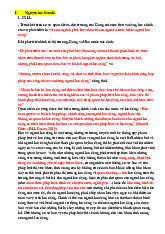

Preview text:
lOMoARcPSD|50713028 MAKE A COPY
THINKING AHEAD: BRAINSTORMING RESEARCH QUESTIONS Directions
In preparation for your next lesson:
1, Identify a broad field or subject area of interest to you. Ask yourself, “What is it that real y
interests me?”. Think about topics, problems, or issues that interest you. Jot down any words that cross your mind.
Examples: health, education, crime, immigration, public health, tourism, recreation, parenting, social justice, etc.
2, Dissect the broad area into subareas. The broad areas you find in Step 1 have many aspects.
Do a quick search on Google or ask people around you, then develop a list of al the aspects as
discreetly and finely as possible.
3, Select what is of most interest to you. You can start by eliminating those sub-areas you are not
very interested in. Think also about the sub-areas that are manageable within the constraints of
time, finance, and expertise at your disposal. If you don’t know yet which one, just pick randomly, you can select again later.
4, Raise research questions. Make a list of whatever questions come to mind relating to your
chosen subarea in Step 3. Ask yourself, “What is it that I want to find out about in this subarea?”.
Illustration of 4 steps:
Source: Kumar, R. (2018). Research methodology: A step-by-step guide for beginners. pp 200-203. Sage. 1% better each day lOMoARcPSD|50713028 MAKE A COPY
Source: Kumar, R. (2018). Research methodology: A step-by-step guide for beginners. pp 200-203. Sage. 1% better each day




